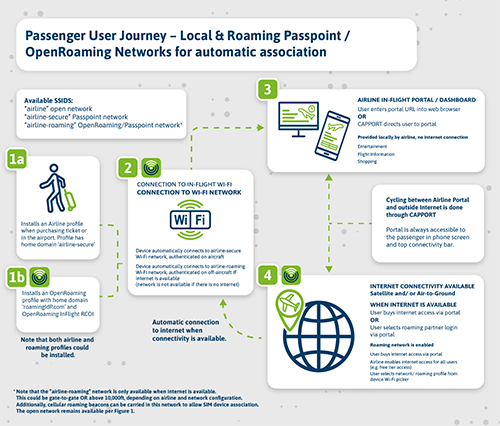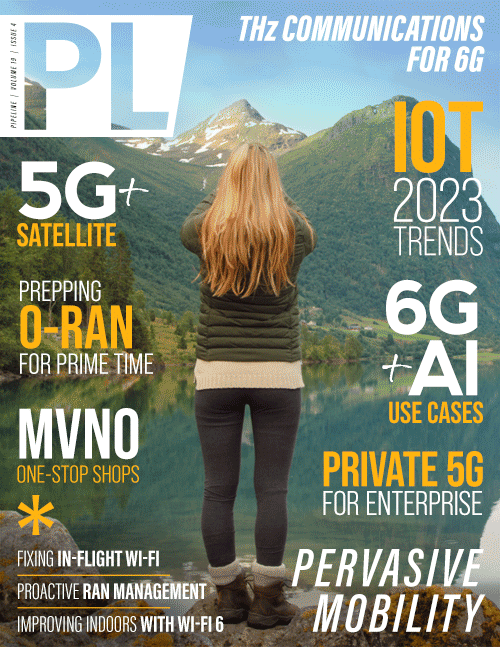Fixing In-Flight Wi-Fi
This technology and operational model can be ported to the in-flight market. Implementing OpenRoaming would free passengers from the hassle of manually entering log-in credentials every time they fly. Instead, the aircraft’s network would automatically authenticate and connect them on every flight after their initial log-in at one of that airline’s plane.

Figure 1: Passpoint enables automatic association of passenger devices
click to enlarge
Airlines also could provide Passpoint subscriptions to members of their frequent flyer programs. As Figure 1 illustrates, the aircraft’s network then can use that Passpoint subscription profile to enable automatic association, thus providing frequent flyer members with a cellular-like experience in terms of a transparent connection to the network. The authentication for this subscription could be processed locally on the aircraft, thus enabling association below 10,000 feet, where no Internet connection is available.
Airlines also can add Roaming Consortium Organization Identifiers (RCOIs) to their subscriptions. By broadcasting OpenRoaming RCOIs aboard the aircraft, the network now can be configured once to support many users, eliminating the need to configure each network for multiple cellular providers. Another key benefit is that RCOIs enable auto-connection to other networks in airports, hotels, and additional locations along the




















